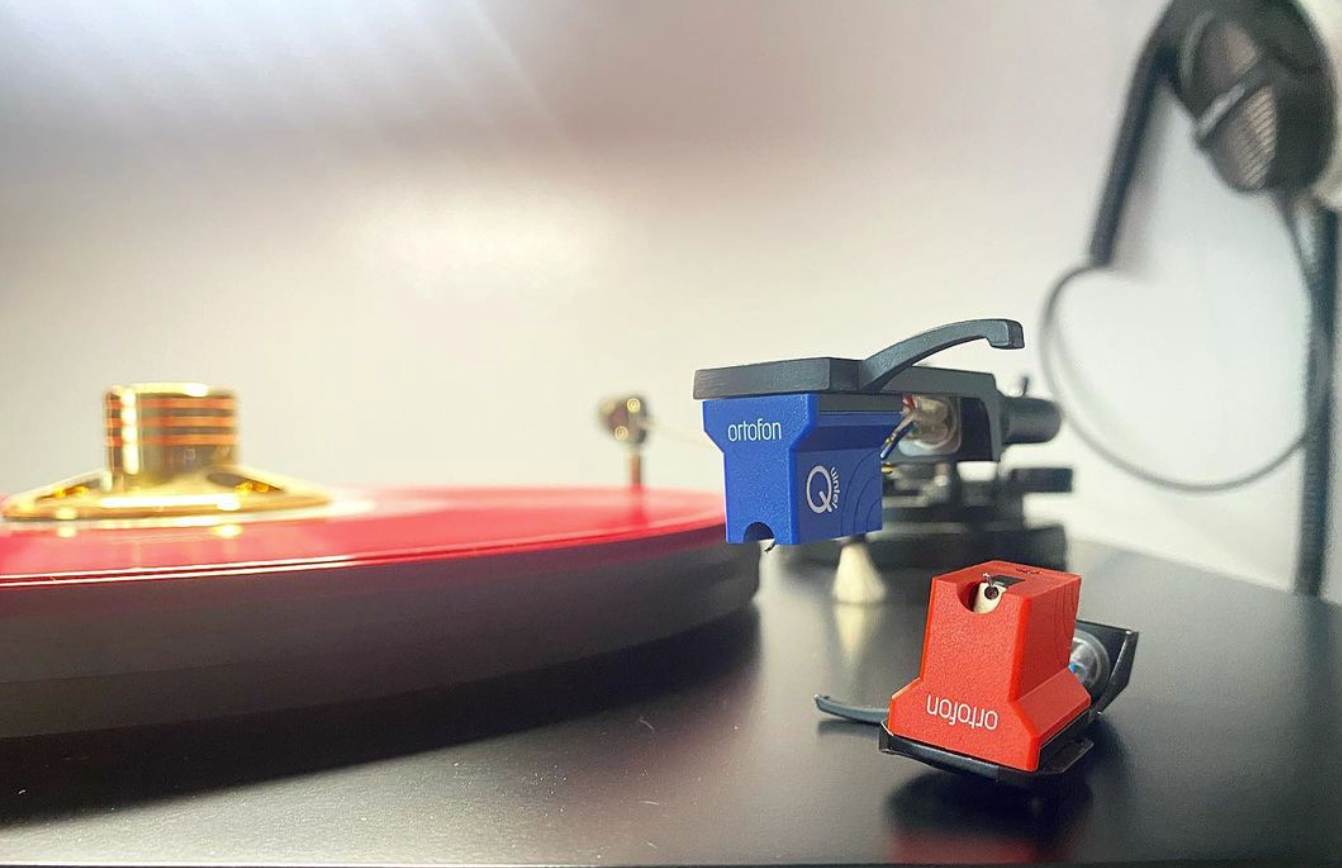Some time ago we compared two of the most popular moving magnet cartridges on the market, the 2M Red and 2M Blue. We are at it again but with moving coil cartridges, the Quintet Red and Quintet Blue. We did a review of just the Quintet Blue recently and wanted to see how much of an upgrade it is from the red, to help you decide on your potential next cartridge. The Quintet line is the entry-level moving coil from Ortofon and is priced competitively with the Red at $359.00 (U.S.) and the Blue at $479.00 (U.S.). While they are less than some of Ortofon’s own MM cartridges, you need to keep in mind that you may need to buy an MC phono stage as well, some turntables and preamps do have MC phono stages built in, but it is not as common as MM. All that said let’s see how the Red and Blue Quintet stack up against each other and which might be the choice for you.
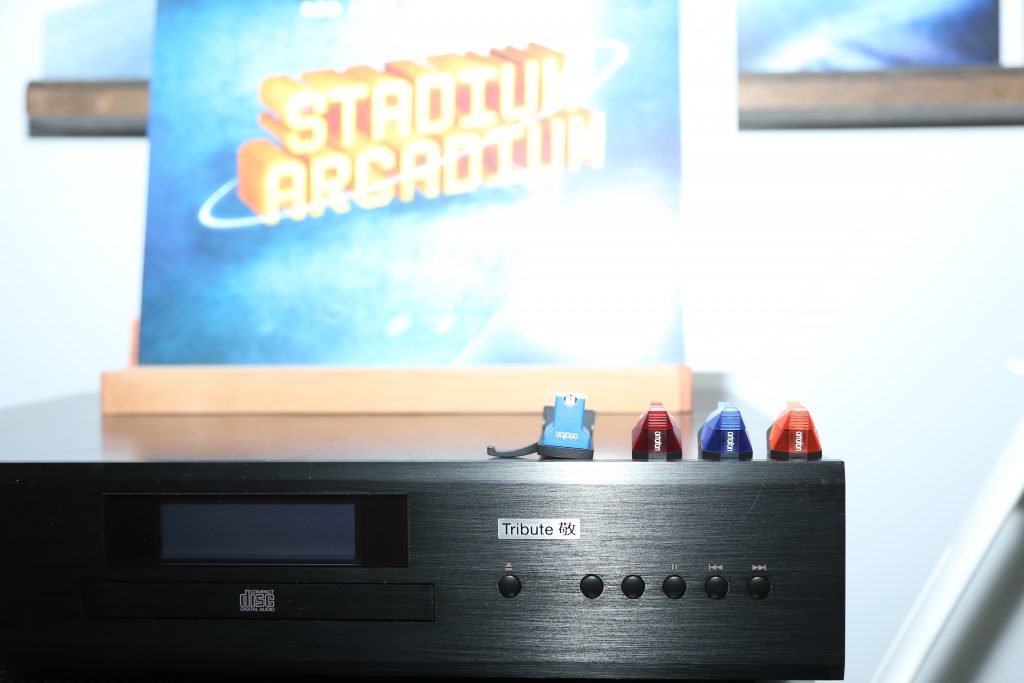
Set-Up
Setting up the Carts went pretty typical, I actually ordered myself a second headshell to do A/B testing. I didn’t want to have to keep mounting and unmounting the carts requiring alignment each time, just swapping out headshells and adjusting tracking weight was much easier. The headshells had a slightly different weight, though both were Audio Technica’s to try to keep everything as close as possible. Both the Red and Blue have a recommended tracking force of 2.3 grams, we kept to this +/- a couple of hundredths of a gram.
For back-to-back track comparisons, I used records I am very familiar with, listening to a track then switching and listening again for any differences between the two. I used 4 very different tracks in the back-to-back test to give a good variety of challenges to the cartridges and try to pull as much out of them as I could, they are listed below.
- Buddy Rich – Both Sides – “From The Sticks”
- Moby – Reprise – “Why Does My Heart Feel So Bad”
- Red Hot Chili Peppers – Stadium Arcadium – “Snow (Hey Oh)”
- Taylor Swift – Folklore – “Exile”
I like a good variety of music, and I think most people do, so I try to test any piece of equipment with a good variety. Even if you only like a couple of genres I want to try my best to cover them as much as possible. In addition to my back-to-back test tracks, I also played Rage Against the Machine – Battle of LA, Run The Jewels – RTJ4, as well as Modest Mouse, Herb Alpert, and several others. While I didn’t do a back-to-back analysis, I will say that both carts perform well and most of the differences I heard while doing more critical testing carry across genres, though some music they may be less noticeable.
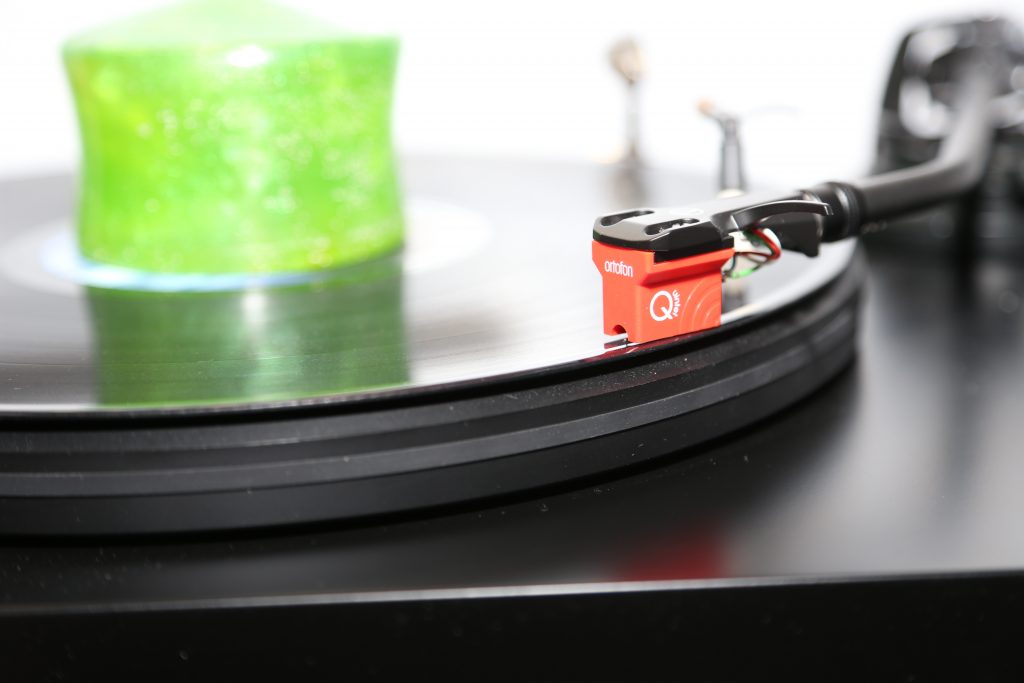
Red Vs Blue
One of the first things I noticed really was that there is less of a pronounced difference in the Quintets than I noticed when comparing the 2M Red and Blue. Differences are certainly more nuanced between the two but that doesn’t mean they are less noticeable when compared. Similar to the 2M though the styli difference is that the Red has an Elliptical Stylus, while the Blue Quintet has a Nude Eltpyical Stylus. If you are not sure or don’t recall the difference, a Nude stylus is made entirely from diamond, whereas a non-nude is a diamond tip bonded to a shank. Typically Nude Styli will have less mass and as we discussed in our Quintet Blue review (here) lowering the mass of the stylus itself, the motor, and, the cantilever all adds up to more accurate tracking. All four of the Reds and Blues share a tip size of r/R 8/18 µm.
Listening differences
Buddy Rich – Both Sides – “From The Sticks”
One of my favorite artists to listen to is Buddy Rich, his drum playing is some of the best in the world, let alone jazz. I enjoy exciting faster-paced jazz, which can be a little harder to reproduce than soft smooth jazz. Listening to “From the Sticks” some of the things I noticed was that the Quintet Blue has an airier top end and better detail throughout. The mid-range was very similar with both the Red and Blue, and harder to hear the differences. Cymbals as I mentioned in the Blue review are greatly represented, the Red was a touch less detailed on crescendos. In the last third of the song during Buddy’s solo, he is rolling on the snare and building in the high hats and the texture of the stick hitting the kit comes through better with the Blue than the Red.
Moby – Reprise – “Why Does My Heart Feel So Bad”
This whole album has so much to offer, being recorded with an orchestra and many different vocalists. Moby did an incredible job putting this together and is one of my all-time favorite albums to listen to. “Why Does My Heart Feel So Bad” has so many excellent elements, so many background sounds, and layering. Extracting all of this is crucial to enjoying it to its fullest. Mixed into the vocals is a gospel-style chorus that creates a real sense of space, and the Blue handled this better than the Red did, as well the Blue has an edge over the red in vocal texture as it does with instruments. Both Red and Blue offer great control, and both are steps up from MM in terms of detail and bass.
Red Hot Chili Peppers – Stadium Arcadium – “Snow (Hey Oh)”
One of my childhood favorite bands, Red Hot Chili Peppers, has a fairly unique sound. They are not for everyone, but no artist is. What underlines all their music is Flea’s funky bass lines, and if you are not drawing them out you are not getting what you paid for in my opinion. This is not to overshadow Chad, John, or Anthony at all, but that funk sound is their signature. Getting clean bass requires a stylus and cartridge that can accurately track the bass and reproduce it without getting muddy. Both Quintets will please you in this regard, and both again do better than the 2M Red and Blue. The lower mass is what leads to this control. The Blue offered a bit more space between instruments, you can more easily hear each instrument playing.
Taylor Swift – Folklore – “Exile”
Taylor Swift has done many duets on her albums, but I think “Exile” with Bon Iver is at the top. The whole album was recorded in a very intimate setting, and you can get a sense of that when you really listen. There is a lot of detail in both vocalists’ voices, and picking up that detail and especially the gravel in Bon Iver’s voice is done a little better by the Quintet Blue. The Piano has a great sustain behind Taylor and Bon’s vocals and the high notes just fill the air. The song records as if it was a conversation with Taylor on one channel and Bon on the other then blending together as their lines go on to where they are singing together. The Channel separation of both the Red and Blue is excellent and really captures the emotion of a strained conversation.
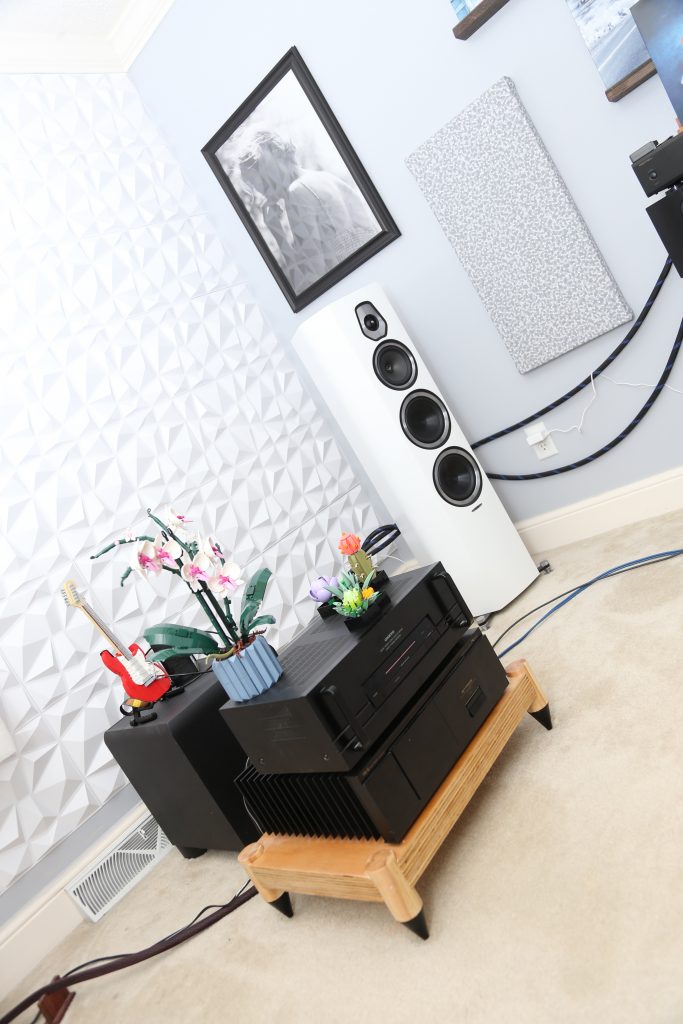
Differences Snap Shot
- Blue has overall better detail
- Blue shows better texture
- The top end is clearer with Blue
- Mid Range is similar
- Blue edges out as better in the lower frequencies
- Vocals are better with Blue
- Both have great channel separation and imaging
Quintet Red Specs
Output voltage at 1 kHz 5 cm/sec – 0.5 mV
Channel balance – < 1.5 dB
Channel separation at 1 kHz – > 21 dB
Channel separation at 15 kHz – > 14 dB
Frequency response 20-20.000 Hz – +/-2.5 dB
Tracking ability at 315 Hz at recommended tracking force *) – 65 μm
Compliance, dynamic, lateral – 15 μm/mN
Stylus type – Elliptical
Stylus tip radius – r/R 8/18 μm
Tracking force range – 2.1-2.5 g (21-25 mN)
Tracking force recommended – 2.3 g (23 mN)
Tracking angle – 20º
Internal impedance, DC resistance – 7 Ohm
Recommended load impedance – >20 Ohm
Cartridge body material – ABS/Aluminium
Coil wire material – Copper
Cartridge colour – Red
Cartridge weight – 9 g
*) Typical value
Quintet Blue Specs
Output voltage at 1 kHz 5 cm/sec – 0.5 mV
Channel balance – < 1.5 dB
Channel separation at 1 kHz – > 21 dB
Channel separation at 15 kHz – > 14 dB
Frequency response 20-20.000 Hz – +/-2.5 dB
Tracking ability at 315 Hz at recommended tracking force *) – 70 μm
Compliance, dynamic, lateral – 15 μm/mN
Stylus type – Nude Elliptical
Stylus tip radius – r/R 8/18 μm
Tracking force range – 2.1-2.5 g (21-25 mN)
Tracking force recommended – 2.3 g (23 mN)
Tracking angle – 20º
Internal impedance, DC resistance – 7 Ohm
Recommended load impedance – >20 Ohm
Cartridge body material – ABS/Aluminium
Coil wire material – Pure 4-nines silver
Cartridge colour – Blue
Cartridge weight – 9 g
*) Typical value
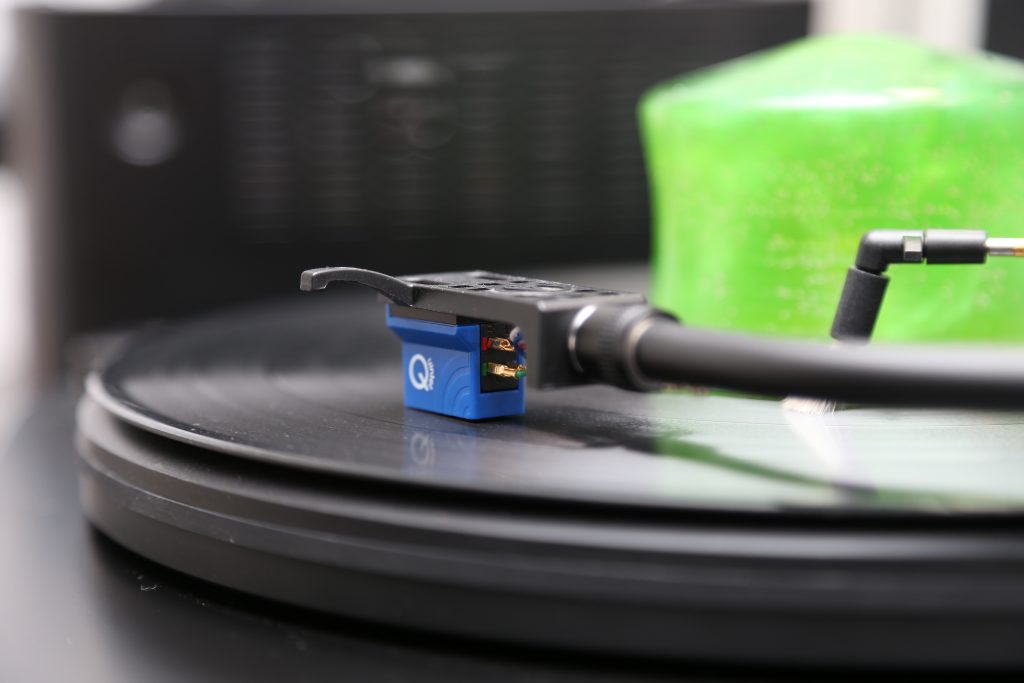
Review Equipment
- Preamp – Marantz Sr7009
- Phono Preamp – Audio-Technica LP-7
- Turntable – Audio-Technica LP-7
- Amplifier – Nakamichi PA-5 Stasis, Onkyo M-5140
- Speakers – Sonus Faber Sonetto V
- Cables – Audioquest interconnects and Conditioning, Viborg Power
Conclusion
Overall Both the Red and Blue are good entries into MC cartridges. They are not the best out there nor are they priced like it either. The pricing is competitive for the performance you get through. While I outlined plenty of differences I heard between the two, don’t think it is like a night and day situation. These are nuanced differences that while evident are not massive. If you are getting into your first Moving Coil cartridge and have a budget you won’t be disappointed with the Quintet Red, but if you have a little more to spend the Blue is worth the money. It is worth saying if you do not have an MC phono stage for the price of the difference you can pick one up from iFi Audio and depending on your budget the Red and the Zen Phono would be a great way to spend your money, though if you can swing an extra 150 dollars the Blue and the Zen Phono sound delightful together. Both the Quintet Red and Blue are a huge step up from the 2M series and that comes with the territory of Moving Coil. If you have a fairly revealing system the Blue is sure to make you happy and for under $500 it’s hard to beat.
If you are in Ohio, Sound and Vision is an Authorized Ortofon Dealer, click the link below for locations, If not click the Ortofon Link to search for your nearest Dealer


Disclaimer:
Ortofon Provided Hifi Chicken with the Quintet Red and Blue for the purpose of review and comparison, Ortofon nor any affiliate paid in full or part in exchange for this review.

